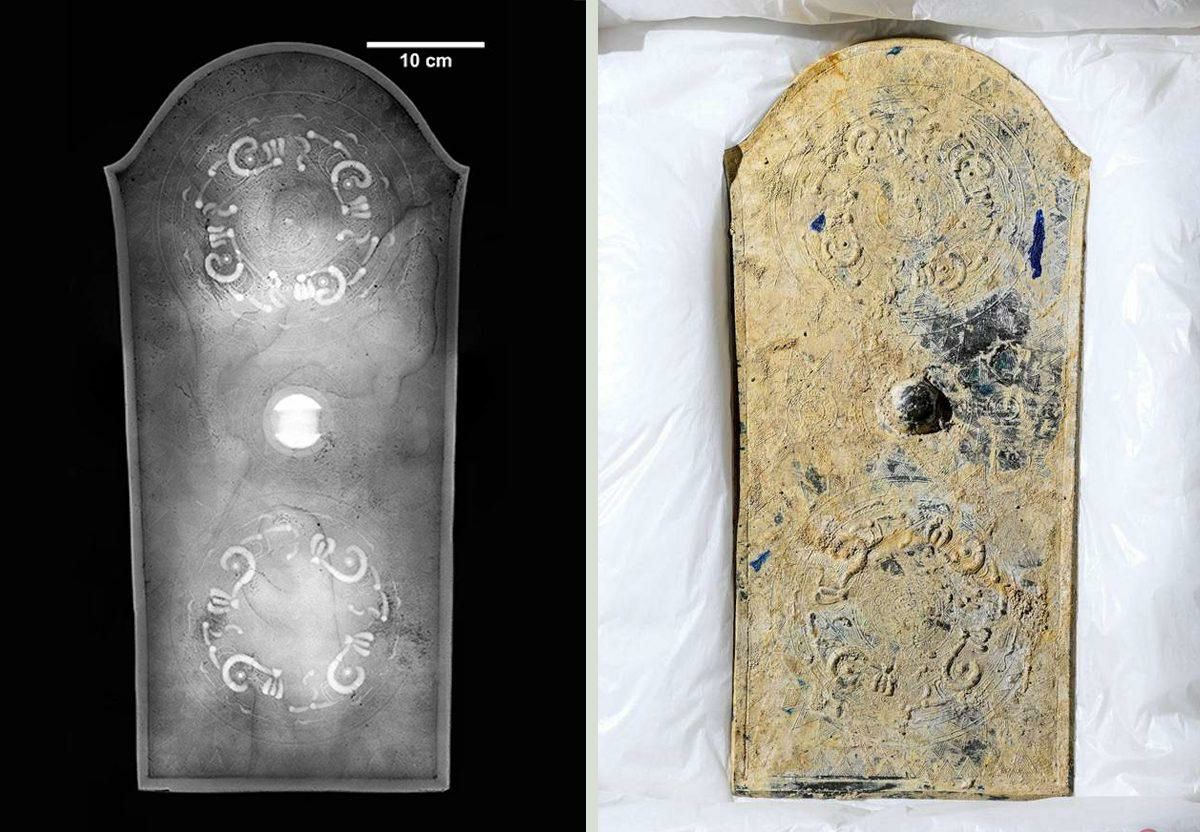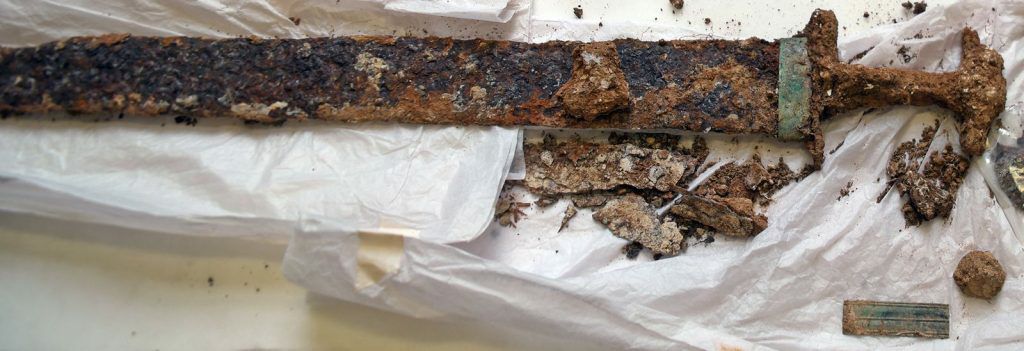Giant 2.3-Metre-Long Dakoken Sword Unearthed: Unprecedented Discoveries in Burial Mound
Archaeologists in Japan have made an extraordinary discovery at the Tomiomaruyama burial mound in Nara City. Working together, the Nara Municipal Buried Cultural Properties Research Centre and the Nara Prefectural Archaeological Institute of Kashihara have unearthed a massive 2.3-meter-long sword known as a dakoken. The excavation, which took place during recent digs, also revealed a shield-shaped bronze mirror. These remarkable findings shed light on the ancient Kofun Period and provide valuable insights into Japan’s early history.
Dating back to the 4th century AD, the Tomiomaruyama burial mound represents a significant period known as the Kofun Period, spanning from AD 300 to 538. This era marks the earliest recorded history in Japan and holds great historical importance. The mound itself boasts impressive dimensions, with an 86-meter diameter and a height of 10 meters. Previous excavations at the site yielded an array of artifacts such as farming tools, utensils, cylindrical copper ware, bronze ware, and intricately decorated mirrors adorned with god-and-animal motifs.
The recent excavation at Tomiomaruyama unveiled an exceptional dakoken sword, crafted from iron and measuring an impressive 2.3 meters in length. Its blade exhibits a slight bend, resembling that of a snake, making it a typical example of a dakoken sword associated with the worship of the snake god. Remarkably, this intact sword is the largest of its kind ever discovered in Japan. Archaeologists speculate that it may have served a ceremonial purpose, possibly used to ward off evil.
Another remarkable find at the burial mound was a shield-shaped bronze mirror. Unlike the rounded bronze mirrors commonly found at other Japanese archaeological sites, this shield-shaped mirror stands out with its unique design. It measures 64 cm in height by 31 cm in width and features a raised center on its backside. Notably, the mirror exhibits two rounded patterns identical to those typically inscribed on “Daryukyo” mirrors from the Kofun Period. This particular shield-shaped bronze mirror boasts the largest surface area of any known bronze mirror found in Japan, with the only comparable example being the one discovered at the Hirabaru ruins in Fukuoka.
While the wooden coffin discovered at the site remains unopened, archaeologists believe its contents are intact due to the absence of evidence of grave robbery. The research team plans to investigate the coffin’s contents at a later stage. Currently, efforts are focused on restoring the sword and mirror to their original glory.
Seigo Wada, the Director of the Hyogo Prefectural Museum of Archaeology, expressed great curiosity about the individual buried alongside these extraordinary artifacts. The presence of such a unique sword and mirror raises questions about the status and significance of the person interred within the tomb. The contents of the coffin hold great promise for further study and examination.
As the excavation continues and the restoration work progresses, archaeologists eagerly anticipate unraveling the mysteries hidden within the Tomiomaruyama burial mound. The discovery of the colossal dakoken sword and shield-shaped bronze mirror not only offers invaluable insights into Japan’s ancient history but also piques curiosity about the enigmatic figure laid to rest with these remarkable objects.
Hits: 3





